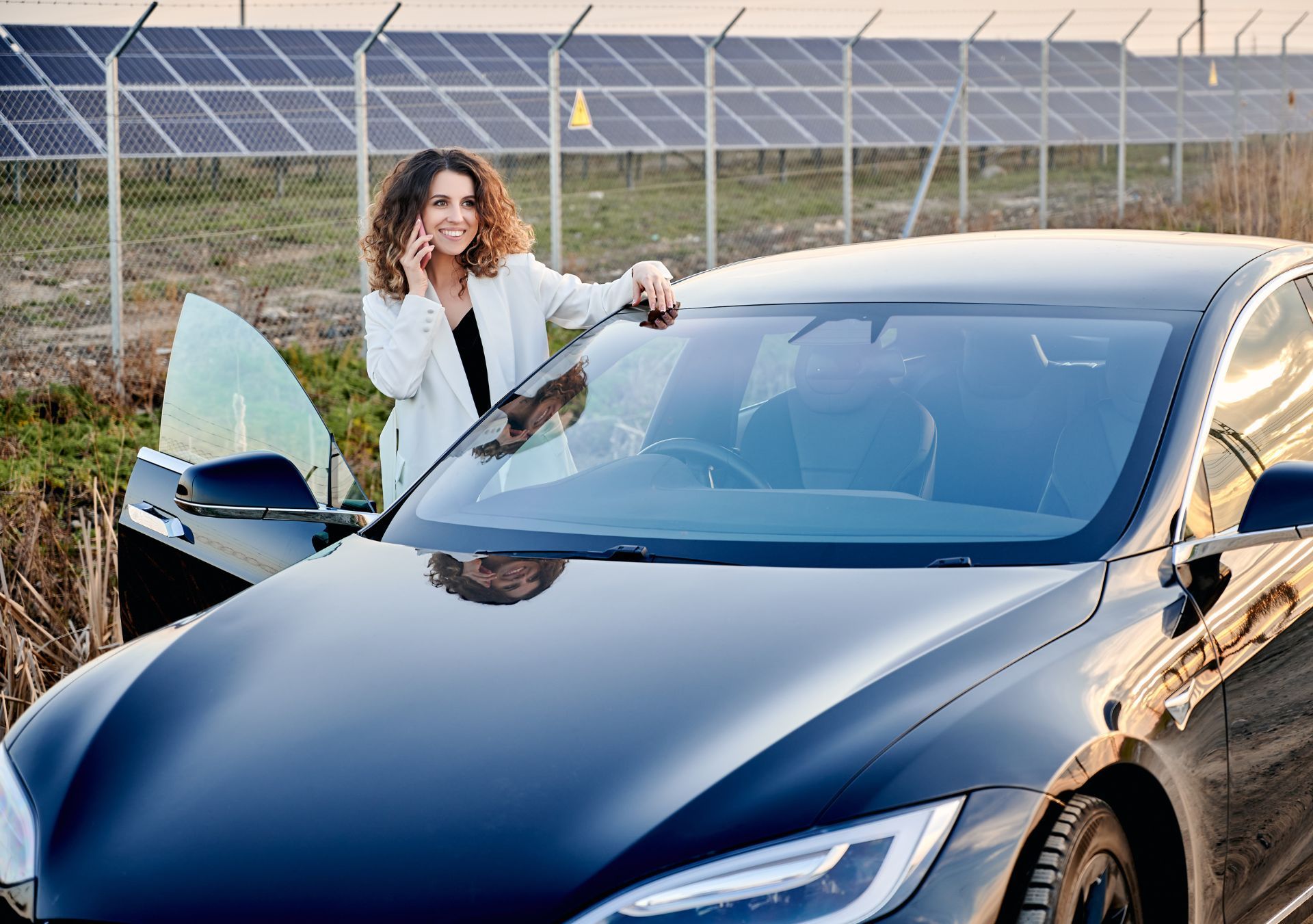
Most Common Personal Policies
Index
Contact Us
Owning a Tesla Model 3 combines cutting-edge electric vehicle technology with sleek design and impressive performance. However, one aspect that often surprises new and prospective owners is the cost of insuring this popular EV. Insurance premiums for the Tesla Model 3 have been rising sharply, outpacing the broader auto market and raising questions about what drives these increases and how owners can navigate them. This comprehensive guide dives into everything you need to know about Tesla Model 3 insurance, from current premium trends to factors influencing costs and tips for managing your coverage.
Understanding the insurance landscape for the Tesla Model 3 is crucial, especially as the average annual premium for full coverage on this vehicle soared by 24% between February 2024 and February 2025, reaching an average of $4,364. This increase is more than double the rate of premium hikes seen across the general U.S. auto market during the same period. For context, the average full coverage insurance cost in the U.S. rose by 10%, from $2,102 to $2,302, but Tesla models have experienced notably steeper climbs in pricing. Electrek’s report highlights these recent trends and the factors behind them.
Why Are Tesla Model 3 Insurance Premiums Increasing?
The sharp rise in Tesla Model 3 insurance premiums can be attributed to several interconnected factors. One primary driver is the elevated repair costs associated with Teslas. Unlike many traditional vehicles, Teslas use specialized parts and technology, which can be more expensive to replace or repair. Additionally, there are fewer repair shops equipped and certified to work on Tesla vehicles, which can limit competition and drive up labor costs.
Daniel Lucas, carrier relations manager at Insurify, explains, "Elevated risk, a higher-priced car that’s more expensive to repair, and fewer places to fix it can raise insurance costs." This insight underscores how the unique nature of Tesla repairs directly impacts insurance pricing. The Model 3, while more affordable than other Tesla models, still commands higher insurance premiums compared to many internal combustion engine vehicles due to these factors. A recent study also found that electric vehicle insurance premiums surged 16% in the past year, averaging 49% higher than those for traditional vehicles.
Another significant factor contributing to rising Tesla insurance costs is an increase in vandalism incidents targeting Tesla vehicles. Reports indicate that vandalism rates have grown, leading to more claims and higher payouts by insurers. This trend has prompted some insurers to raise premiums to offset the growing risk. Shannon Martin, an insurance expert at Bankrate, cautions potential Tesla owners to monitor this trend, stating, "It isn’t something drivers need to be worried about happening today... But it is something they need to keep their eye on in the future, especially potential Tesla owners." CNN’s coverage elaborates on how vandalism is influencing insurance dynamics.
Furthermore, the growing popularity of electric vehicles, particularly Teslas, has led to a larger pool of drivers on the road who may not be as experienced with the unique handling and technology of these cars. This influx of new Tesla drivers can lead to an increase in accident rates, which insurers factor into their premium calculations. As more people transition to electric vehicles, the learning curve associated with driving a Tesla can contribute to a higher incidence of minor collisions or mishaps, further driving up insurance costs. Additionally, the sophisticated technology in Tesla vehicles, including Autopilot features, can sometimes lead to confusion or misuse, resulting in accidents that might not occur with more conventional vehicles.
Insurance companies are also increasingly considering the overall risk profile of Tesla owners. Many insurers analyze data from telematics and driving behavior to assess risk more accurately. Since Tesla vehicles are equipped with advanced technology that tracks driving habits, insurers can use this data to determine how safely a driver operates their vehicle. While this can lead to lower premiums for cautious drivers, it can conversely raise costs for those whose driving patterns indicate higher risk. As a result, Tesla owners may find themselves facing fluctuating premiums based on their driving behavior, adding another layer of complexity to the insurance landscape for electric vehicles.

How Tesla’s Insurance Division Is Shaping the Market
Tesla has not only been a pioneer in electric vehicles but also in offering insurance products tailored specifically for its cars. Tesla Insurance, launched in recent years, aims to provide competitive rates by leveraging the vehicle’s technology and data to assess risk more accurately. In 2023, Tesla’s insurance division reported nearly $500 million in written premiums, signaling rapid growth and increasing influence in the auto insurance space.
By using real-time driving data and advanced safety features embedded in Tesla vehicles, Tesla Insurance attempts to offer more personalized pricing and incentivize safer driving habits. However, despite these efforts, the overall trend of rising premiums for Tesla models, especially the Model 3, continues due to external factors like repair costs and vandalism.
For many Tesla owners, the company’s insurance offering presents an attractive option, but it’s essential to compare rates and coverage options with traditional insurers to ensure the best value. The growing footprint of Tesla Insurance reflects the company’s commitment to integrating vehicle ownership and insurance, but market forces still heavily influence premium trends.
Moreover, Tesla’s unique approach to insurance is not just about pricing; it also encompasses a broader vision of safety and innovation. By analyzing driving behavior through its advanced onboard systems, Tesla can identify patterns that lead to accidents or risky driving. This data-driven strategy not only helps in tailoring insurance premiums but also contributes to the development of features aimed at reducing accidents. For instance, the introduction of Autopilot and Full Self-Driving capabilities is part of Tesla's broader strategy to enhance vehicle safety, which could eventually lead to lower insurance costs as the overall risk diminishes.
In addition to its innovative pricing model, Tesla Insurance is also exploring partnerships with other tech firms to enhance its offerings. By integrating telematics and artificial intelligence, the insurance division aims to refine its risk assessment processes further. This could lead to more dynamic pricing models that adjust in real-time based on driving behavior, making insurance more responsive to individual drivers. As the automotive landscape continues to evolve with advancements in technology, Tesla's insurance division stands at the forefront, potentially reshaping how consumers view and purchase auto insurance in the future.
Factors Influencing Tesla Model 3 Insurance Costs
Repair and Replacement Costs
The Tesla Model 3’s advanced technology and materials contribute significantly to repair expenses. The vehicle’s battery packs, sensors, and autopilot hardware require specialized handling and parts that are often pricier than those for conventional cars. Moreover, the limited number of Tesla-certified repair centers can lead to longer wait times and higher labor costs, which insurers factor into premium calculations. Additionally, the use of aluminum and high-strength steel in the Model 3's construction, while beneficial for safety and performance, can complicate repair processes, further driving up costs. For instance, if a Model 3 is involved in a collision, the need for specialized tools and trained technicians can delay repairs and increase the overall expense, impacting insurance premiums.
Safety Features and Autonomous Driving
On the flip side, Tesla’s safety innovations and autonomous driving capabilities have the potential to reduce accident frequency and severity. A study comparing autonomous and human drivers found that Waymo’s autonomous service incurred zero bodily injury claims over 3.8 million miles, while human drivers averaged 1.11 claims per million miles. While Tesla’s Autopilot and Full Self-Driving features are not fully autonomous, they contribute to safer driving conditions that could eventually help lower insurance costs as the technology matures. Furthermore, Tesla vehicles are equipped with an array of safety features such as automatic emergency braking, lane departure warnings, and collision avoidance systems, which not only enhance driver safety but also provide insurers with data that can be used to assess risk more accurately. As these technologies become more prevalent and proven, they may lead to a shift in how insurance companies calculate premiums, potentially benefiting Tesla owners in the long run.
Driver Profile and Usage
Insurance premiums also depend heavily on individual driver profiles, including age, driving history, location, and usage patterns. Urban areas with higher rates of vandalism or accident claims may see steeper premium increases. Prospective Tesla owners should consider these factors and shop around for quotes to find the best insurance fit for their circumstances. Additionally, factors such as the driver's credit score and the frequency of use can also play a crucial role in determining insurance costs. For example, a driver who uses their Model 3 for daily commuting in a busy city may face higher premiums compared to someone who uses the vehicle primarily for leisure drives in a rural area. Insurers often analyze these patterns to predict risk, making it essential for drivers to be aware of how their habits can influence their insurance rates. Furthermore, many insurance companies are beginning to offer usage-based insurance models, which can provide savings for those who drive less or maintain safe driving habits, presenting another opportunity for Tesla owners to explore cost-effective options.
Tips for Managing Tesla Model 3 Insurance Premiums
Despite rising costs, there are strategies Tesla Model 3 owners can use to manage and potentially reduce their insurance premiums:
- Shop Around: Comparing quotes from multiple insurers, including Tesla Insurance, can uncover competitive rates and better coverage options.
- Leverage Safety Features: Inform insurers about the use of Tesla’s advanced safety and driver-assist features, which may qualify for discounts.
- Increase Deductibles: Opting for a higher deductible can lower monthly premiums, though it means more out-of-pocket costs in the event of a claim.
- Maintain a Clean Driving Record: Safe driving habits and a clean record remain the most effective way to keep insurance costs down over time.
- Consider Usage-Based Insurance: Some insurers offer pay-as-you-drive or usage-based insurance programs that reward low mileage and careful driving.
Being proactive and informed about insurance options can help Tesla Model 3 owners balance protection with affordability. Additionally, it's worth noting that many insurance companies offer discounts for bundling policies, such as combining auto and home insurance. This can lead to significant savings, especially for those who are already paying for multiple types of coverage. Furthermore, taking advantage of any available loyalty programs or discounts for long-term customers can also contribute to reduced premiums over time.
Another effective strategy is to regularly review and update your policy as your circumstances change. For example, if you move to a safer neighborhood or if your vehicle's value decreases, it may be beneficial to reassess your coverage needs. Engaging with your insurance agent to discuss these changes can lead to adjustments in your premiums, ensuring that you are not overpaying for coverage you no longer need. Staying informed about the latest developments in insurance technology, such as telematics and mobile apps that track driving behavior, can also provide insights into how to further optimize your insurance costs.

The Future of Tesla Model 3 Insurance
As electric vehicles become more mainstream and autonomous technologies advance, the insurance landscape for Tesla Model 3 and other EVs is likely to evolve. While current premiums reflect the challenges of repair costs and vandalism, ongoing improvements in vehicle safety and broader adoption of autonomous features may help mitigate risks and stabilize insurance rates. The integration of advanced driver-assistance systems (ADAS) in vehicles like the Model 3 not only enhances safety but also provides insurers with more data to assess risk accurately, potentially leading to lower premiums for drivers who utilize these features consistently.
Moreover, Tesla’s growing insurance division is expected to expand its offerings and refine pricing models based on real-world driving data, potentially driving more competitive rates for owners. By leveraging data from its fleet, Tesla can tailor insurance products that reward safe driving behavior, which may appeal to environmentally conscious consumers. However, vigilance is necessary as external factors like vandalism trends and repair infrastructure will continue to influence premiums. The cost of replacement parts for EVs, which can be significantly higher than traditional vehicles, remains a concern, particularly as the market for electric vehicles grows and repair facilities adapt to new technologies.
For those considering a Tesla Model 3, staying informed about insurance developments and regularly reviewing coverage options will be key to managing ownership costs effectively. The dynamic nature of this market means that what holds true today may shift in the coming years, underscoring the importance of ongoing research and comparison shopping. Additionally, as more insurers enter the market and competition increases, consumers may find themselves with a wider array of choices, allowing them to select policies that best align with their driving habits and financial situations.
For more detailed insights on Tesla’s insurance market growth,
Insurance Business Magazine offers an in-depth look at Tesla’s expanding footprint in the insurance industry. The article delves into how Tesla's unique approach to insurance, combined with its innovative technology, is reshaping the traditional insurance model, making it essential reading for anyone interested in the future of automotive insurance.
Conclusion
Insuring a Tesla Model 3 involves navigating a unique set of challenges and opportunities. While insurance premiums have surged significantly—rising 24% in just one year—understanding the underlying causes, such as high repair costs and increased vandalism, can help owners make informed decisions. Tesla’s own insurance offerings, combined with the vehicle’s advanced safety features, provide some avenues to manage these costs, but careful shopping and risk management remain essential.
As the electric vehicle market matures and autonomous technologies improve, the insurance landscape for Tesla Model 3 owners may become more favorable. Until then, staying educated about insurance trends and leveraging available tools will help ensure that protecting your investment doesn’t become an unexpected financial burden.


